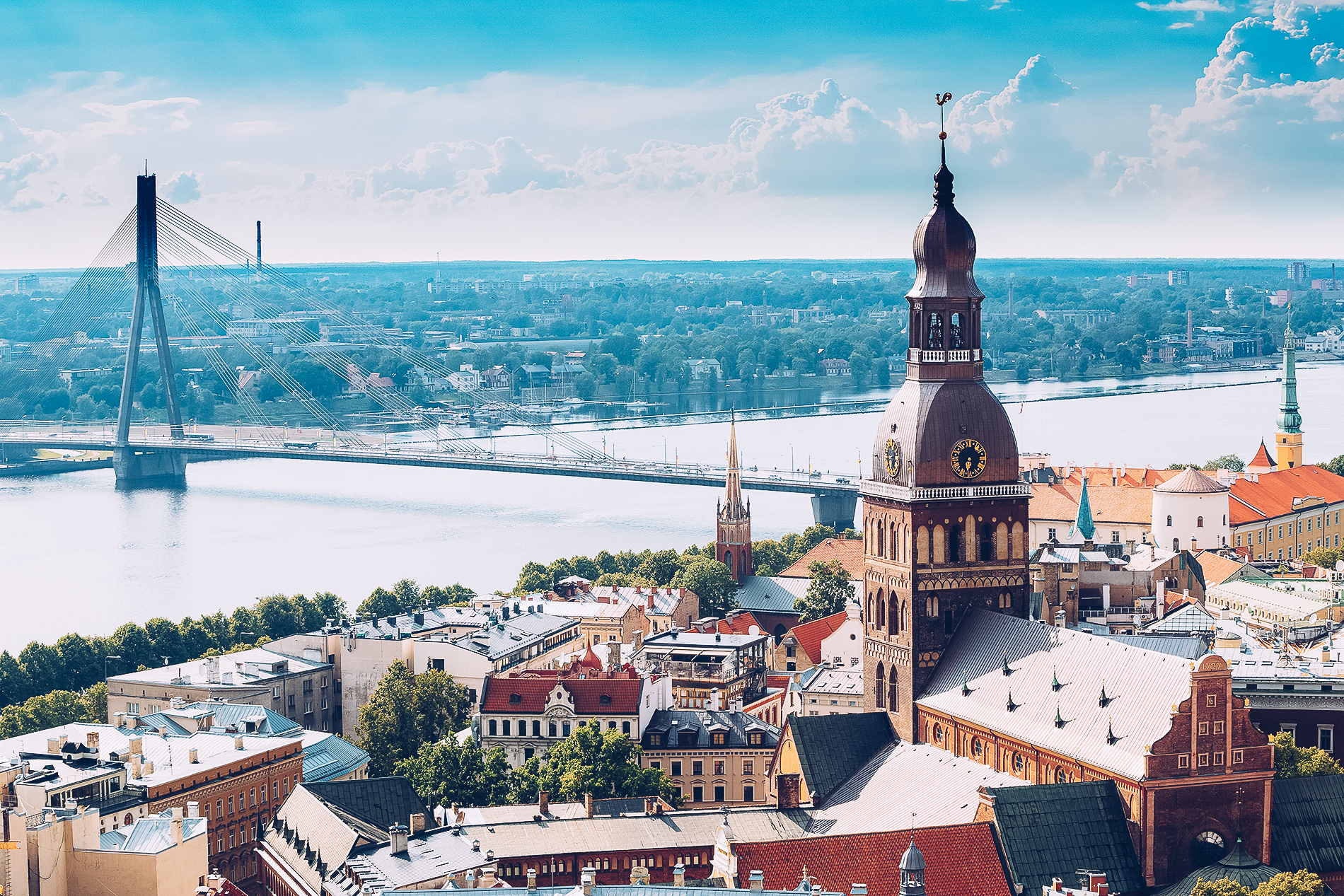You know, those three little countries to the north? Those with a history of feudalism and invasions, the ones that came under Russian rule in the 18th century and couldn’t fully shake it off until 1990? They got their independence after a pacifist protest known as the Singing Revolution, when 2 million people formed a human chain across 372 miles. Travel guides often overlook the Baltics for more glamorous locales but to do so is a disservice. The Baltics offer myriad delights and are relatively affordable, too.
So where are the Baltics? The countries of Estonia, Lithuania and Latvia make up an area of 67 square miles, which make traveling by road an ideal way to go. Traveling by bus is comfy, cozy and environmentally friendly, as it reduces your CO2 emissions compared to flying. In the past decade Baltic bus companies such as Lux Express, Ecolines and Kautra have upped their game and offer a variety of amenities including on-board coffee machines, free WIFI, leg rests and individual entertainment screens.
With this in mind, we’ve crafted a bus route for you to travel from Estonia through Latvia and down to Lithuania (or vice versa, if you prefer).
Part 1. From Tallinn to Riga

Estonia is a global tech leader: the country was the first to offer electronic ballots and its capital, Tallinn, is a start-up mecca with plenty of expats. The Northernmost of the Baltic states is also big on ecology, which makes sense considering more than half of its land is forest.

There is a lot to do in Estonia. The city has a vibrant food scene with many innovative restaurants that mix traditional Estonian and Eastern European cuisine with modern flourishes. Rataskaevu 16 boasts an impressive wine menu and hearty dishes such as braised elk roast with blackcurrant sauce. Samsa Family Bakers, an Uzbek street-food spot in the Old Town, has the best chebureki (a sort of deep-fried empanada) in town.
Getting there: LuxExpress and Ecolines both offer journeys of about four and a half hours. You travel from the city to the suburbs into the hinterland before stopping at the resort town of Parnu and finally Riga.
Part 2. From Riga to Vilnius

Latvia has the oldest flag in the world, dating back to 1279, and its capital, Riga, is home to the majority of the country’s population (more than 600,000 people). The Old Town in Riga, another UNESCO World Heritage Site, contains a mix of Romanesque, Gothic and baroque buildings, as well as instances of Art Nouveau on Alberta iela and historic wooden houses in the Kalnciema quarter.

Want to know what to do in Latvia? The city has a beer spa located in the center where you can unwind with warm beer baths while drinking a cold one and benefit from treatments with various medicinal plants. The National Opera and Ballet saw Riga native son Mikhail Baryshnikov perform in 2015, and St. Peter’s Church, a Gothic 13th century jewel, boasts the best view of the city from its spire. Across the Daugava river you’ll find the National Library, aka the Castle of Light, a 223-feet high structure covered in glass by Latvian-American architect Gunārs Birkerts.

Latvian cuisine is meaty, ideal for its cold winters, but nowadays you can also find veggie options in Riga. Milda features traditional dishes at reasonable prices and a great atmosphere.
Apsara Tea House is a unique spot inside a park, a cozy cabin with their own tea brand. Climb the spiral staircase and sit facing the panoramic windows while you enjoy a hot beverage.
Getting there: LuxExpress, Ecolines or Kautra all offer service in around four hours traveling through farmland, past traditional stone houses into the Vilnius shopping center before arriving in the city proper.
Part 3. Vilnius

Lithuania is the geographical center of Europe: specifically, the small village of Purnuškės, 16 miles outside Vilnius, the capital and there is a lot to do in Lithuania. And you guessed it—Vilnius Old Town is also a UNESCO World Heritage Site. This one, however, is the largest in the Baltic countries. If you want to see it for yourself, head over to Gediminas Tower, the remains of a 14th century castle. The Gates of Dawn, from the 16th century, were originally for defense but today are a pilgrimage site for the Russian Orthodox.

Did you binge “Chernobyl” on HBO when it came out? Then you must visit the Museum of Occupations and Freedom Fights, a former KGB building that was used as a filming location for the series.

Undoubtedly, the most popular spot in Vilnius is Užupis, a bohemian district located across the Vilnelė river. Its residents declared independence in 1997 and it has its own president, constitution and currency!
Vilnius, like its neighboring capital cities, also has an innovative food scene with trendy spots such as Amandus. If you want to eat and support a social cause, head over to Pirmas Blynas, a pancake venue that employs people with disabilities. Their seasonal menu has sweet and savory pancakes, including a special one created by the employee of the month.


The Lithuanian capital is known for its unique spots, such as Cat Cafe Kačių Kavinė, which is the ideal venue for cat lovers. Guests can enter for free and enjoy breakfast, lunch and a cattuccino in the company of a well-cared family of 15 cats.
